May 19, 2025
Author:Lisa Martinez
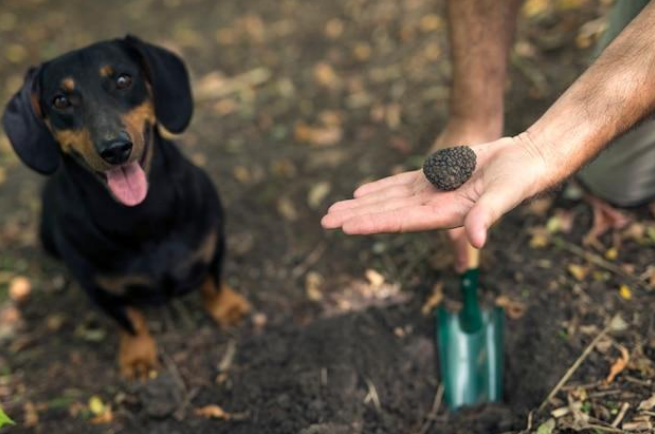
Have you ever seen your pup produce black stool with a tar-like appearance and become concerned about its meaning? The sight of black stool in your dog’s droppings will definitely make you feel uneasy but remain calm first. Your dog's stool provides important health information which can help you avoid unnecessary expenses and reduce your stress and save you time. This article explores the significance of stool color change while focusing on black jet-like stool appearances and presents the four essential factors including Color, Consistency, Contents and Coating.
By the end, you’ll know what causes dog black stool, when it’s harmless, when it’s serious, and what steps to take. Ready to become your pup’s poop detective? Let’s dive in!
Black stool in dogs, medically called melena, looks dark, sticky, and tarry. This happens when blood from higher up in the gut mixes with digestive juices, turning it black. Not all dark stools are melena—sometimes food or supplements cause the same look. For instance, a meal heavy on liver or a dose of activated charcoal can mimic that tar-like coating without any bleeding.
The key difference is texture. Dog black stool that’s truly melena feels sticky and may have a shiny surface. Non-tarry dark stools are usually firmer and dry. If you’re not sure, take a photo and compare it to online references (but don’t diagnose yourself!).
Spotting dog black stool can mean two very different things: a harmless diet quirk or a sign of internal bleeding. Ignoring true melena could let an ulcer, tumor, or other serious condition worsen. On the flip side, overreacting to dietary causes might lead to unnecessary vet bills. Learning to tell the difference helps you act swiftly when needed and stay calm when food is the culprit.

Let’s explore the main reasons your dog’s poop may turn dark.
Sometimes, what your dog eats makes their stool look black. Foods rich in organ meat—like liver treats or a raw diet heavy on kidneys—can darken the poop. If you gave your pup a special liver snack or mixed in some charcoal-based supplement, you might see a one-off case of dog black stool that clears up in a day or two. To keep things balanced, follow guidance on choosing quality food ingredients—this applies for dogs just as it does when picking fresh vs. processed options for cats in our fresh vs. processed cat food guide.
Iron pills are notorious for turning stool black in both humans and dogs. Your vet might also give bismuth subsalicylate (the main ingredient in Pepto-Bismol) to calm an upset stomach—this, too, can cause dog black stool. Activated charcoal used after toxin exposure works the same way. If your dog’s stool darkens after starting a new supplement, check with your vet but don’t panic.
Real melena happens when blood from the stomach or small intestine breaks down and darkens. Causes include ulcers, tumors, swallowed foreign objects that tear the gut lining, or trauma from accidents. This bleeding makes stool sticky and shiny. If your dog black stool is persistent and paired with other worrying signs, internal bleeding is the likely culprit.
Hookworms and whipworms among parasites consume blood which results in minor bleeding incidents. The processing of waste by liver or kidney disease results in darkened stool.
Inflammatory conditions like pancreatitis or IBD alter digestion and can contribute to a tarry appearance. If infections or chronic disease are suspects, your vet may recommend parasite testing or organ-function blood work.
Even if you spot dog black stool, context matters. Keep an eye on these red flags:
● Vomiting, diarrhea, or lethargy: These signs alongside black stool hint at serious GI upset.
● Loss of appetite or dehydration: Reduced drinking or dry gums means your dog isn’t well.
● Abdominal pain or fever: A painful belly or high temperature needs prompt care.
One dark stool might just be a diet glitch. But if you see dog black stool for more than 24–48 hours, or the poop looks worse over time, it’s time for action. Vomiting blood (“coffee-ground” material) or sudden weakness also demand immediate veterinary attention. For better health of your dog, you need to focus on his dietary habits. We recommend you buy WOpet’s automatic pet feeder.
Watch for changes like less play, reluctance to walk, or straining to defecate. Even a slight shift in activity—like your dog favoring rest over their usual romp—can signal discomfort. When in doubt, note any odd behavior in your ‘DooDoo Diary’ (see Prevention and Monitoring below) and bring that info to your vet.
If your dog’s stool stays black or concerning signs appear, here’s what to expect at the clinic.
Start by jotting down when dog black stool began, any diet or medication changes, and other symptoms. Photograph the stool if possible. Gather a fresh sample in a clean container—this helps with parasite checks. Don’t scrub the sample; your vet needs it in its natural state.
A vet will assess hydration, temperature, and abdominal pain. They may feel your dog’s belly for masses or tenderness. Be honest about treats, human foods, and supplements given recently. It all helps.
● Blood tests: Check for anemia (low red blood cells), liver enzymes, and kidney values.
● Imaging: X-rays or ultrasound can reveal tumors, foreign bodies, or ulcers.
● Endoscopy: A small camera lets vets see the stomach lining directly and collect biopsies if needed.
● Fecal analysis: Identifies parasites like hookworms or whipworms that might cause bleeding.
If you want deeper reading on parasite prevention and overall gut health—topics as crucial for dogs as they are for cats—see our guide on common health issues in pets and how to prevent them.

Treatment depends on the cause of your dog’s dog black stool.
If food is the villain, switch to a mild, balanced diet. Avoid organ-heavy foods for a week or two. Gradually reintroduce normal kibble to prevent another upset. For meal planning tips, dog owners can adapt ideas from cat feeding guides like choosing quality cat food for healthy cats.
Your vet may adjust or stop supplements that darken stool. Never change dosages without professional advice.
● Antibiotics or antacids: For ulcers or infections.
● Anti-parasitics: To clear hookworms, whipworms, or other blood-feeding pests.
● Surgery: If tumors, blockages, or severe ulcers are found.
● Fluid therapy: To combat dehydration, especially if vomiting or diarrhea accompany the bleeding.
Between vet visits, feed a bland diet—boiled chicken and rice work well. Monitor hydration by checking skin elasticity and gum moisture. Record stool quality daily. If in doubt, lean on telehealth or ask your vet for at-home monitoring tips.
Staying ahead of trouble means regular checks and smart habits.
Provide high-quality, digestible dog food. Sudden diet shifts can cause gastrointestinal upset. Think of it like switching your cat’s water fountain—abrupt changes often backfire; read more in our cat hydration hacks guide.
Schedule annual exams with fecal tests and deworming. Early detection of GI issues or organ concerns saves lives—and wallets.
Use the four C’s—Color, Consistency, Contents, Coating—to note changes in stool. Keep a “DooDoo Diary” recording diet, treats, and stool appearance. This habit can highlight patterns that even the best-trained spotter might miss.
Head to the vet ASAP if you see:
● Persistent black stool for over two days
● Vomiting blood or severe weakness
● Signs of collapse or extreme dehydration
These are medical emergencies, especially for puppies or senior dogs.
Dog black stool can indicate both benign dietary causes and major health problems. Your dog's health depends on your close collaboration with the vet while observing black stool texture and associated symptoms to ensure your furry friend's safety. Your dog's health depends on you checking each stool because it can affect their well-being. Act promptly and stay while immediately consulting professional care whenever you have doubts about your dog's health. Your dog relies on your actions to stay healthy.
Label:
Popular Post

What to Feed a Sick Dog With No Appetite? [2025 Guide]
May 16, 2023
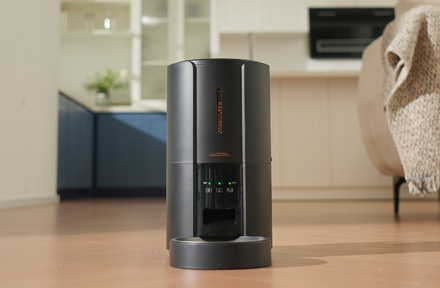
Troubleshooting Common Issues with Automatic Pet Feeders: Tips & Tricks for Pet Owners
Oct 26, 2023
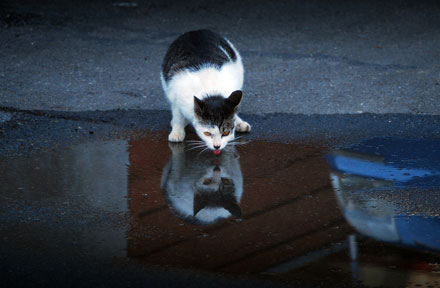
Why Does My Cat Cough After Drinking Water? 8 Potential Reasons
Mar 13, 2023
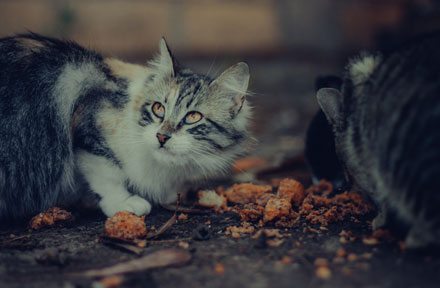
My Cat Only Eats A Little at A Time - What to Do?
Feb 27, 2023
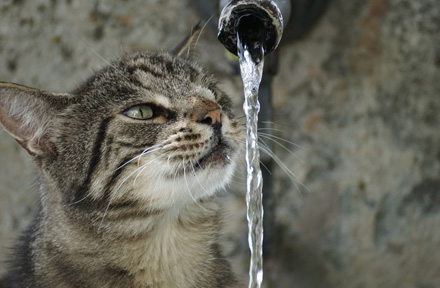
Why is My Cat Throwing up Water? Top 5 Causes Here
Feb 08, 2023
$99.99
$129.99
Copyright © 2025 WOPET. All Rights Reserved.